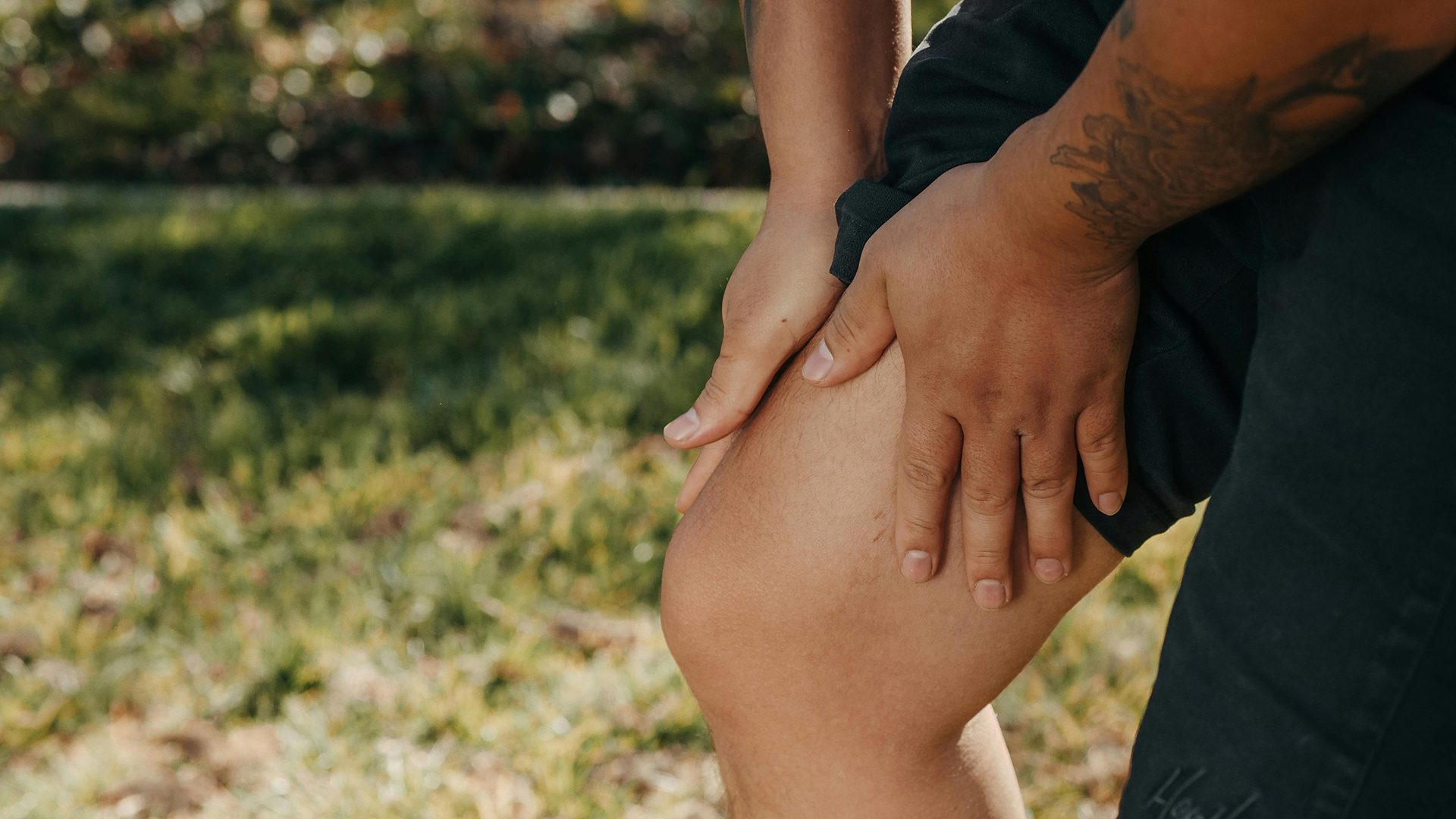Lymphedema
Lymphedema causes swelling in the arms and legs. Some cancer survivors may experience lymphedema as a side effect of surgical or radiation cancer treatment. Early identification and treatment may prevent the condition from progressing and this can improve quality of life.

Watch for symptoms and inform your health care provider, so you can get treated as early as possible. Lymphedema can affect survivors physically and emotionally. You may have concerns about your appearance, increased risk of infections, functional limitations and pain. Talk with your health care provider about any concerns you have.
Symptoms of Lymphedema
When lymph fluid builds up in the body, there can be swelling of arms, legs, trunk or other body parts. Symptoms and swelling may appear for a short time, disappear without treatment and then return. If you notice any symptoms, write down when they happened, what you were doing and if anything made it better. Sometimes, when the swelling comes and goes often, it might be the beginning of chronic lymphedema. Early detection and treatment is very important. Once swelling becomes chronic, it is only manageable and not reversible. Check your body regularly for these common symptoms:
- Swelling of the arms, legs or trunk on the affected side of the body.
- Feeling of heaviness or discomfort in an arm or leg.
- Loss of flexibility in the hand, wrist or ankle.
- Difficulty fitting into your clothes.
- Tightness of rings, watch or bracelet.
- Infections that won’t go away or keep coming back in the same area.
- Feeling of tightness in the skin (this may be felt even before there is noticeable swelling).
- Pitting of the skin (swelling in which an imprint remains after light pressure is applied).
Risk of Lymphedema in Cancer Survivors
Lymphedema can happen after a treatment that changes your lymph nodes and lymphatic vessels. The occurrence of lymphedema does not mean treatment was done incorrectly. An infection can also cause damage to the lymphatic system. It is very important to protect the body from infection.
The side effects from some cancer treatments can cause lymphedema. Sometimes radiation damages lymph nodes. Sometimes survivors need surgeries to remove lymph nodes altogether. A biopsy to remove a tumor and surrounding tissue can damage lymphatic pathways and may allow bacteria to enter the body through the break in the skin. These changes can contribute to lymphedema.
Lymphedema can occur during treatment, immediately following treatment, or years after cancer treatment ends. Because there is not an exact risk time period, it is important to go for regular check-ups and look for changes in your body that might be symptoms. Factors for developing lymphedema include the type of treatment you had, other predisposing factors and your body’s response to treatment.
Risk factors for lymphedema:
- Biopsy.
- Lumpectomy.
- Simple mastectomy.
- Modified radical mastectomy with node dissection in the armpit.
- Surgical removal of lymph nodes.
- Traumatic injury.
- Radiation.
- Infection.
- Impaired lymphatic structure and function.
- Surgery or biopsies that sample lymph nodes or disrupt lymph flow in the groin or axilla (armpit).
- Individual predisposition and basic conditioning factors yet to be fully understood.
Cancer types at risk of lymphedema:
- Breast cancer.
- Melanoma.
- Prostate cancer.
- Ovarian cancer and other gynecological cancers.
- Head and neck cancers.
- Colorectal cancer.
- Cancers involving lymph node sampling or dissection.
- Radiation to the lymph nodes.
Other factors may also put a survivor at risk for lymphedema. These include being seriously overweight, having diabetes and taking certain medications. However, there has not yet been a great deal of research about how or whether these factors increase your risk for lymphedema. Discuss these factors with your health care team if they apply to you.
How to Minimize Risks for Developing Lymphedema
To decrease your risk of developing lymphedema, talk with your health care team about treatment alternatives. Ask about strategies to minimize your risk and learn about treatment therapy.
- Watch for even a slight increase in size or swelling and other symptoms of the arm, hand, fingers, chest wall, trunk or legs. Contact your health care team as soon as you notice any one of these symptoms.
- Avoid having injections, finger sticks or blood drawn from the arm that is at risk for lymphedema. If there is no other option, the injection or stick site needs to be carefully prepared with an antiseptic and covered with a protective bandage afterwards. You should tell the person injecting your arm or drawing blood that you are at risk for lymphedema.
- Do not have blood pressure checked in the at-risk arm. After cancer treatment involving the breast or the armpit, use the arm on the unaffected side for blood pressure checks. When procedures have involved both sides of the body, use the thigh for blood pressures checks if possible.
- Avoid Infection. Keep the skin of at-risk arms or legs very clean and healthy. Use moisturizing cream or lotion (such as Eucerin, Lymphoderm, Curel) after bathing. Dry gently but thoroughly.
- Make sure the at-risk arm or leg gets proper circulation. You can do this by occasionally raising the at-risk or affected arm or leg above the level of your heart and exercising regularly at an appropriate level of exertion.
- Avoid vigorous, repetitive movements against resistance with the at-risk or affected arm or leg. Consult your health care provider or lymphedema therapist regarding an individualized program of gradual conditioning to resume or increase physical activity. Use the other limb if possible or ask for help. Avoid activities such as scrubbing, pushing and pulling.
- Avoid heavy lifting or putting excessive pressure on the affected limb. Limit lifting to less than 15 lbs.
- Avoid constriction of existing lymphatic vessels. Women using breast prostheses after mastectomy should select a lightweight prosthetic. Use only loose-fitting jewelry around at-risk or affected fingers or arm(s). Do not use underwire bras or bras that decrease circulation to the shoulder, trunk or breast and do not use over-the-shoulder straps on the at-risk or affected side. Never carry heavy handbags or bags with at-risk or affected arm.
- Avoid extreme temperature changes on the at-risk or affected arm or leg. Closely monitor temperature changes when bathing or washing dishes. Avoid saunas and hot tubs to keep affected limbs out of extreme temperatures.
- Minimize chances of any injury: bruising, cuts, sunburn or other burns, sports injuries, insect bites, animal bites or scratches to at risk or affected arm(s) or leg(s). Wear protective clothing and sunscreen. Shave with an electric razor rather than a safety razor. Wear gloves while doing housework, gardening or any type of work that could result in even a minor injury. Wear shoes or house slippers to protect feet. If you are getting your nails done, tell the manicurist or pedicurist of special needs and precautions. If injuries do occur, watch for signs of infection including swelling, redness, pain, warmth and fever.
- Establish a safe exercise program. Consult with a member of your health care team before starting an exercise program. Contact your health care provider if your at-risk arm or leg shows signs of swelling, discomfort, aching or pain. Ask if you should, lie down and elevate the limb. Activities such as walking, swimming, light aerobics, bike riding and specially designed ballet or yoga may be included in your individualized exercise programs with appropriate conditioning.
- Take special precautions when traveling by air. Wear a well-fitted compression sleeve or stocking if you have lymphedema. Additional bandages may be required on long flights. Increase fluid intake while in the air, but avoid alcohol and high salt intake. Ask for guidance for the at-risk limb from a lymphedema specialist before travel. Avoid lifting heavy baggage without assistance. Exercise your arms and legs regularly and practice deep breathing exercises.
Treatments or Therapy for Lymphedema
Lymphedema can be managed with effective treatment, but there is no cure. However, it is believed that an early diagnosis and treatment of any temporary swelling can help prevent chronic lymphedema from happening. Ask your health care provider what would be best for your situation.
Compression Bandaging and Garments
- A well-fitted daytime compression garment reduces day-time swelling.
- An overnight garment and/or compression bandaging reduces night-time swelling.
- Specialized multilayer bandaging is routinely used around the clock during intensive treatment to reduce limb volume.
- Overnight bandaging may be continued as part of self-management to control swelling.
Exercise
- Exercise under the guidance of the therapist and while the limb is under compression is carried out daily to help reduce limb swelling.
- Over-exertion is avoided to prevent fatigue and further swelling.
Skincare
- The skin is moisturized and protected from breakdown to prevent infection, which further increases limb swelling and can lead to life-threatening systemic infection.
Healthy Diet
- Maintaining a healthy weight with a well-balanced diet.
- Maintain hydration.
- No dietary protein restriction is recommended for lymphedema even though lymph is a protein-rich fluid.
Manual Lymphatic Drainage
- Specialized manual techniques are applied by the therapist trained in lymphatic therapy and taught to the individual with lymphedema for self-care treatment.
- This gentle “massage” technique stimulates the lymphatic system, reducing swelling and other symptoms.

